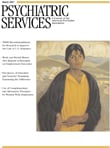This book, following the initial Foundations in Social Neuroscience, brings together the fields of ethology, genetics, primatology, neuroimmunology, and endocrinology. The editors, John T. Cacioppo, who is a Tiffany and Margaret Blake Distinguished Service Professor at the University of Chicago, and Gary G. Berntson, professor of psychology, psychiatry, and pediatrics at Ohio State University, have assembled 11 scholarly essays to build rapprochement between social and cognitive neurosciences, once considered disparate epistemologies. The first author, in a chapter titled "The Nature of Nurture: Maternal Effects and Chromatin Remodeling," states that the schism was tantamount to studying "rectangularity" while exclusively attending to either width or length.
The authors examine maternal influences in socialization and stress adaptation among adult offspring. The first essay discusses how female rats who engage in high levels of grooming, licking, and arched-back nursing rear less fearful offspring. These offspring have an attenuated hypothalamic-pituitary-adrenal (HPA) axis response to stress, which is an inducible defense modulated by DNA methylation of cytosine nucleotides at exons within glucocorticoid-receptor-promoter sequences.
The second essay, "Aggression, Serotonin, and Gene-Environment Interactions in Rhesus Monkeys," describes the impact of deficient serotonergic (5-HTT) functioning upon rhesus monkeys' social regulation of aggressive behavior. A heterozygous, short allele within the promoter—with resultant decreased transcription of the serotonin transporter gene, in the context of peer-reared monkeys—poses a vulnerability toward impulsivity and excessive alcohol consumption. There appears to be a similar diathesis for alcohol-dependent human probands wherein reduced serotonergic expression bears association with the 5-HTT short variant polymorphism (
1 ). For rhesus monkeys, secure early-attachment relationships with their mothers assuage, and provide buffering against, potential deleterious effects.
Another author, vis-à-vis stress mediators, introduces the concept of allostasis—a metalevel mechanism for achieving stability via change that is helpful during limited periods. Yet the mechanism can lead, under sustained stress, to allostatic overload, which is an imbalance reflected in a condition such as chronic fatigue syndrome within a setting of low cortisol and elevated cytokines. Estrogen mitigates the HPA response to stress, and female animals, in situations that are not life-threatening, demonstrate a pattern of "tend-and-befriend" versus fight-or-flight.
Later, in "Oxytocin and the Prarie Vole: A Love Story," one author renews appreciation of the role of social bonding in overall well-being of organisms and learns that oxytocin facilitates positive social interactions, even partner selection. Oxytocin acts to down-regulate autonomic reactivity, such as heart rate and blood pressure, and has anatomical colocalization with dopamine, thus serving to integrate the means whereby "love bestows its benefits." Then, in "On Pheromones, Vasanas, Social Odors, and the Unconscious," the author writes of social chemosignals and proposes androstadienone as a useful pheromone in enhancing brain glucose utilization and allocating cognitive resources toward emotional tasks, including sexual mating. There is also a discussion of the effects of ovarian pheromones such that female rats that give birth within a fortnight of one another undertake communal nursing, and in turn the pups attain greater weights.
I have merely skimmed a few of these richly stimulating essays in a collection that is beguiling for its brevity. Upon finishing this text, one eagerly anticipates further contributions to this series on social neuroscience.

